TRENDING
Historical Photographs Captured During The Vietnam War
Published
4 years agoon
The Vietnam War was one of the longest and bloodiest battles in the history of humanity. Beginning in 1955, the war would rage on for 20 years until peace was finally called for. Officially, the war was fought between North and South Vietnam. America would wade in to try and prevent communism prevailing in the north thanks to support from China and the Soviet Union.
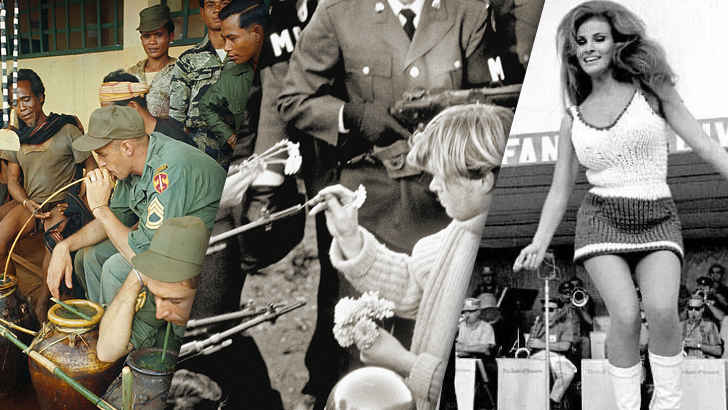
It took many years of strife before the war drew to a close with the falling of Saigon on April 30, 1975. The war was controversial as many Americans didn’t feel their country should get involved, but despite that, troops were sent to battle in Vietnam anyway.
Taking Cover

Just like in WWI and WWII, soldiers dug trenches to protect themselves from enemy fire when both armies were facing each other. Here we see American troops taking cover from enemy fire by hitting the dirt in their trench.
Meeting The Enemy
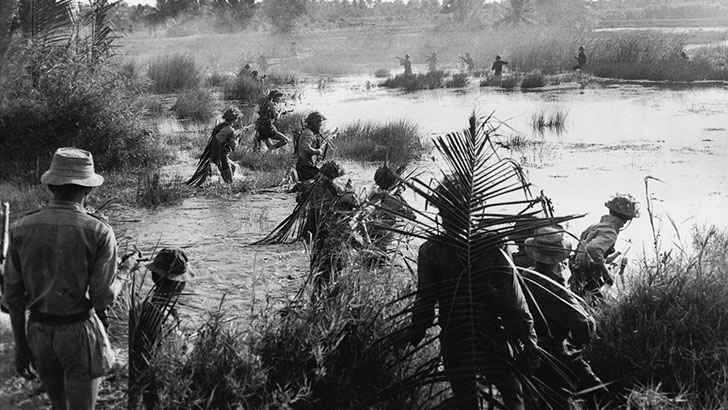
While it might have felt as though much of the fighting was done while hidden in the jungle, there were times when opposing armies came face to face. Lots of fighting was done by ambushing the other, but here the Viet Cong took on members of the South Vietnamese fighters in the open.
Struggling With The Terrain

The terrain was a real struggle for American soldiers. Wading through the waist-high water was a common problem to face, and while they were sunk in the water they were very open to attacks. Entering the jungle in Vietnam was a terrifying time for all troops as they had to be on their guard at all times.
Scouring The Wreckage
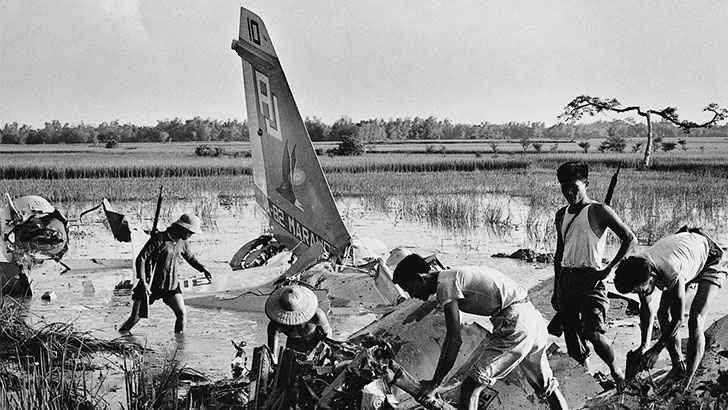
There were many planes shot down during the war, and those who did the shooting would follow the aircraft to its landing spot. From there they could investigate the wreckage and try to salvage anything worthwhile to the cause. This US Navy plane was shot down near Hanoi, but the pilot is believed to have been ejected before it came crashing down to the ground.
A Break
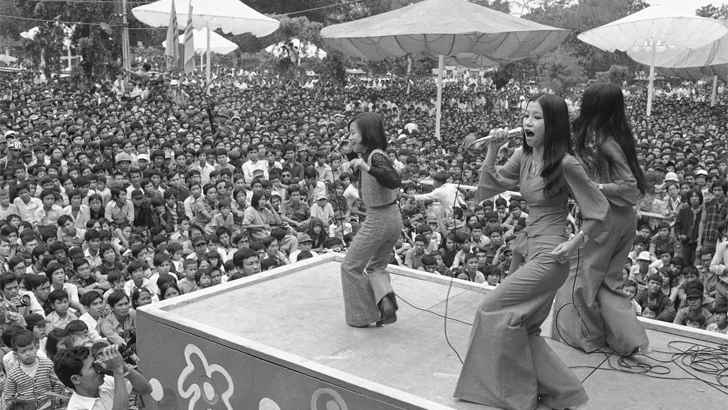
The U. S. troops based out in Vietnam were under immense pressure. Not only did they fear they could be ambushed at any moment, but they also had to battle the landscape and the isolation of being thousands of miles from home. To try and lift the spirits of the men, the U. S. Army often hosted entertainment events on the military bases.
More Entertainment
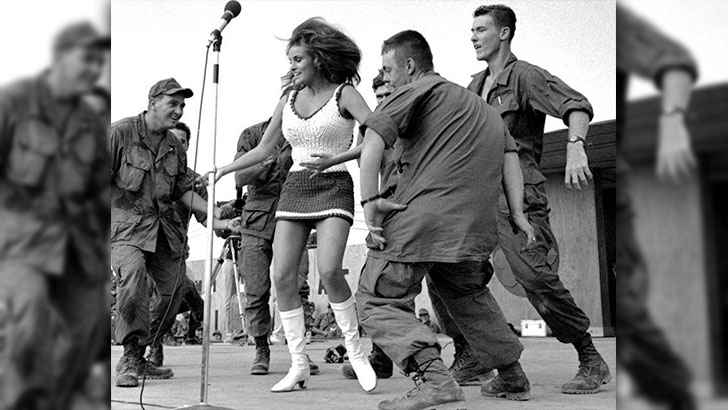
Often celebrities from back home in America were flown over to give the soldiers a better taste of home. On this occasion, one of the most famous actresses of the ‘60s, Raquel Welch, entertained soldiers by dancing and speaking with them.
Poisoned Bamboo

In many wars it’s not just about the brute strength of an army, it’s also about the tactics used in the field. These guerilla soldiers are guarding some of the Viet Cong’s most prized weapons, poisoned sticks known as punji.
Puppy Power!

Being stuck out in the jungle left many of the soldiers tired, unhappy, and with a bleak feeling of despair. They had lost hope, but this soldier couldn’t help himself and enjoyed playing with a puppy found in the war zone.
Dropping Elephants
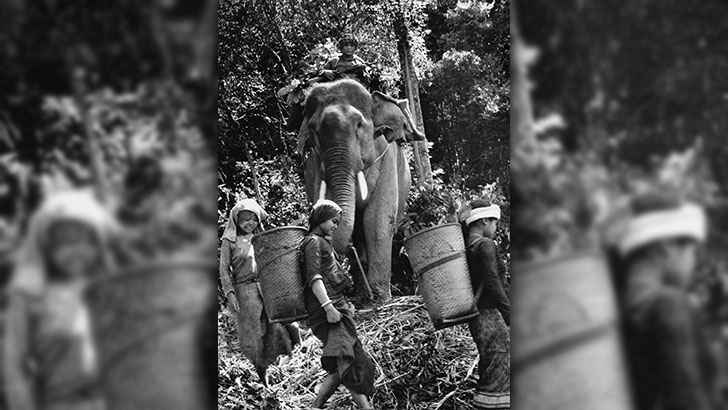
The terrain in the Vietnamese jungle was incredibly difficult to get through, and soldiers couldn’t rely on military vehicles to transport their weaponry. Instead, elephants were drafted in to do much of the heavy lifting, both by the North Vietnamese fighters and the South.
Search And Destroy Missions

American soldiers were tasked with search and destroy missions, where they would be sent into the jungle to find any Viet Cong strongholds. Once they discovered what they were looking for, the soldiers were not able to show mercy and instead had to destroy the homes of the people they found.
The Other Side
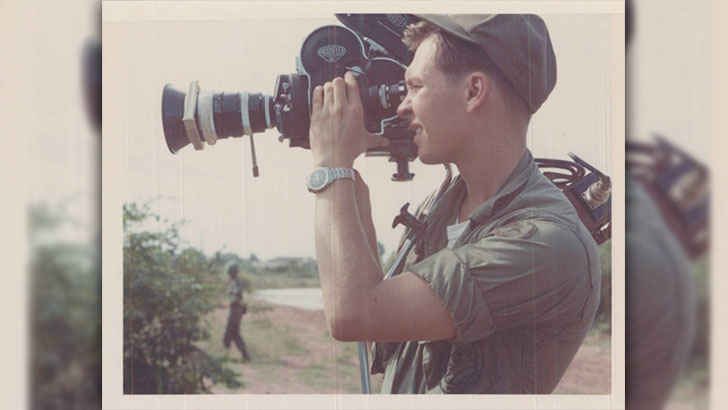
It wasn’t just soldiers sent into the jungle of Vietnam. Photographers were sent in to document the struggles American troops were dealing with and to send those images back home. The photos would let Americans at home see how the conflict was going and what their brave soldiers were having to go through.
Activists
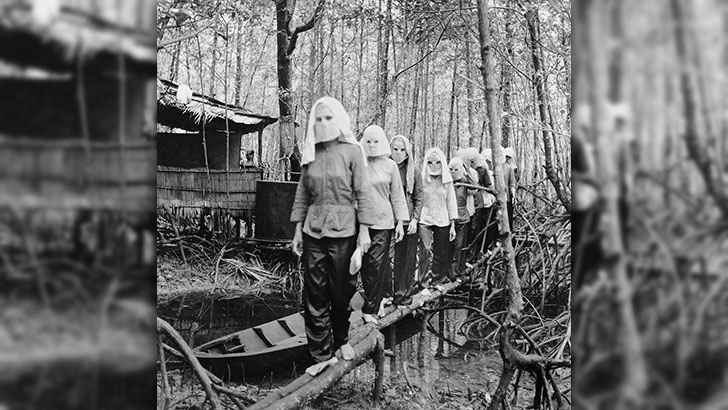
These activists wanted to protect their identity. They didn’t want to know each other incase they were captured and interrogated. Should they ever be caught by the enemy they would know nothing about their allies, so even under the threat of torture, they would be giving nothing away.
Soaked To The Bone
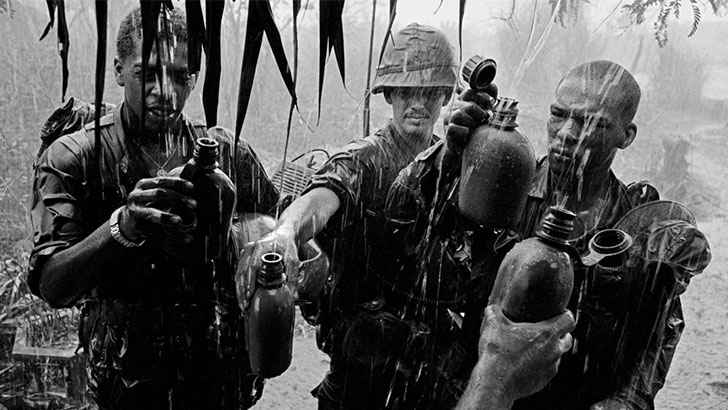
While soldiers often had to contend with incredibly humid conditions, they could enjoy the rain from time to time. The rain would provide troops with a break from the stifling heat, but eventually, these wet moments would take their toll.
Changine Roles

Before the Vietnam War began, fishing was done pretty much exclusively by the men in many communities across the country. However, during the war, many of the men were either off fighting or had lost their lives for their causes. In these situations, the women of the fishing villages stepped into roles of providers and started catching fish for themselves.
Time For A Song
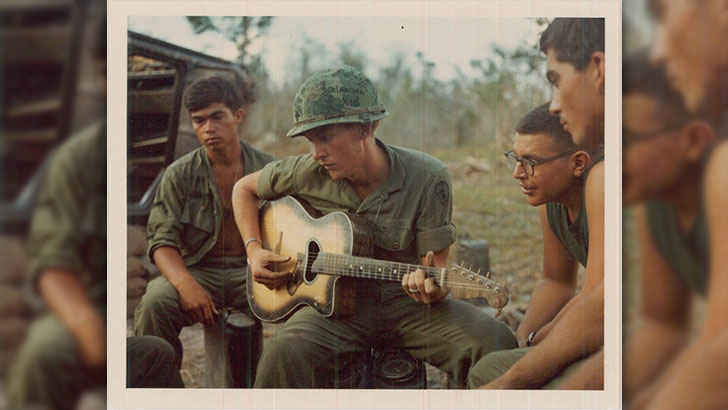
The days could be incredibly long while fighting out in Vietnam for American soldiers. Any way to pass the time was welcome and if that meant singing a little bit of kumbaya, then so be it. This image was taken on a particularly long day during Operation Yellowstone.
Standing Guard
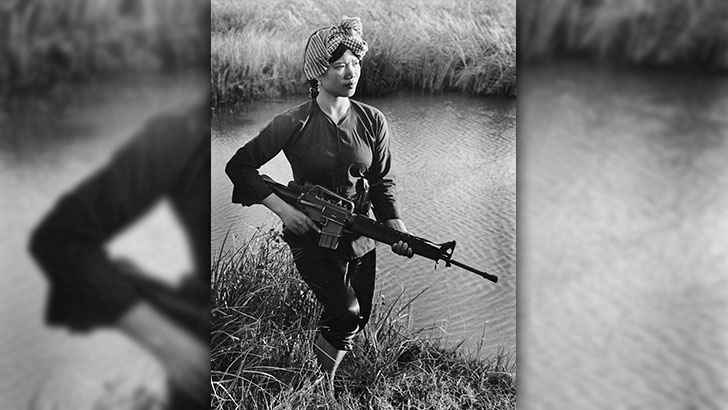
In many wars throughout history it wasn’t just the men who fought, and there were plenty of women standing up for what they believed in too. This woman was a Viet Cong guerrilla who was fairly typical of many rebels during the conflict.
Taking Cover

While the medics had to learn to improvise, so too did armed soldiers. Bullets could come spraying from any angle, so soldiers always had to know where their nearest cover was. This soldier is taking cover from enemy attacks behind a wall in Tam Ky, the capital of the Quang Nam province.
War Chic
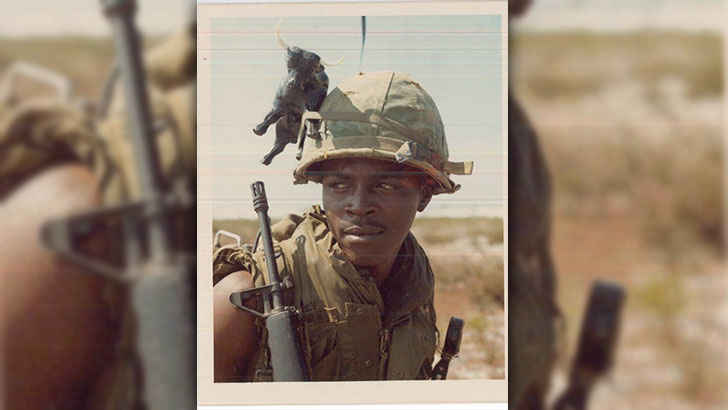
The outlook for many troops based in Vietnam might have felt pretty bleak. After wading through the thick jungle for days at a time, eventually many soldiers began to lose hope. Hoping to try and keep that fear away, this soldier let his personality shine through thanks to his helmet decoration.
Practice
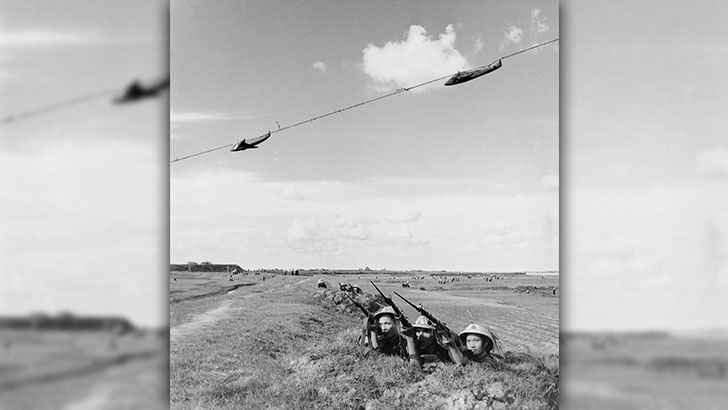
Practice makes perfect, and these soldiers are training in the art of shooting down enemy aircraft. Using moving targets, they aim their rifles to the sky learning to anticipate where to shoot when the real things fly overhead. Aircraft fly past in the blink of an eye, so these soldiers were learning to anticipate their movement through the sky.
A Hero?
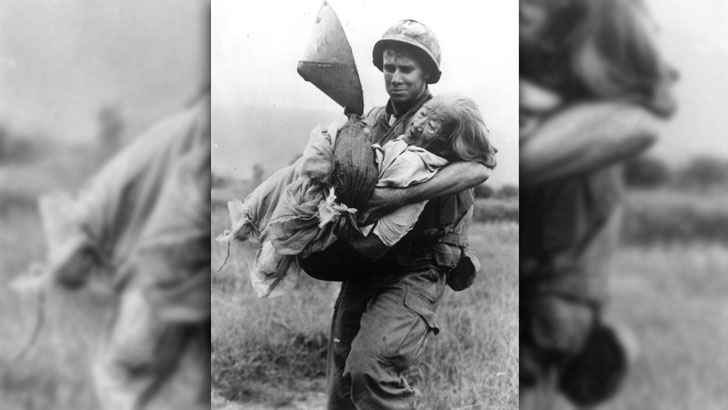
When coming to the aid of village people during the Vietnam War, many villagers were unable to follow the soldiers quickly enough. This elderly woman wore traditional Vietnamese clothing and didn’t have any shoes, meaning she couldn’t keep pace with the marching soldiers.
Missing Home
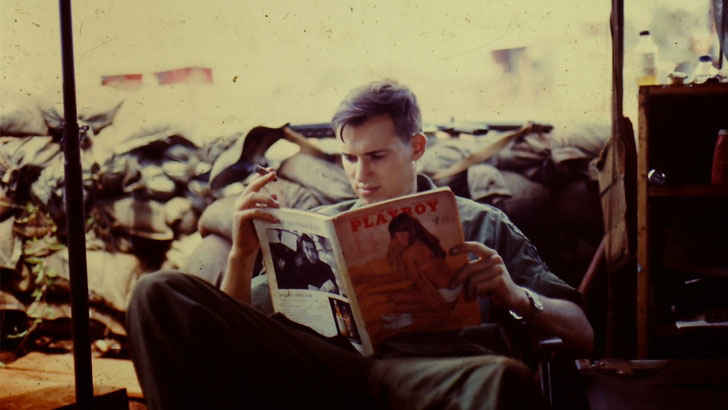
Being trapped in the jungle for months on end would prove to be a struggle for many soldiers stationed in Vietnam. Imagine being trapped somewhere you can barely breathe without any of your home comforts, it would be terrible. The soldiers tried to unwind as best they could and whenever a package came from home they made sure they enjoyed it.
Nowhere To Hide
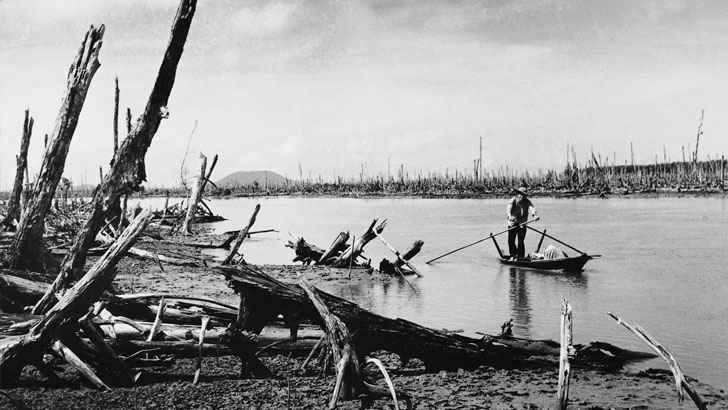
When fighting against the Viet Cong and the North Vietnam forces, many American troops struggled with the dense jungle. Enemies lurked around every corner, up trees, or in holes waiting to ambush them. Not only enemies, but there were hundreds of traps placed just waiting for a soldier to fall victim to.
Weeping For Lost Friends
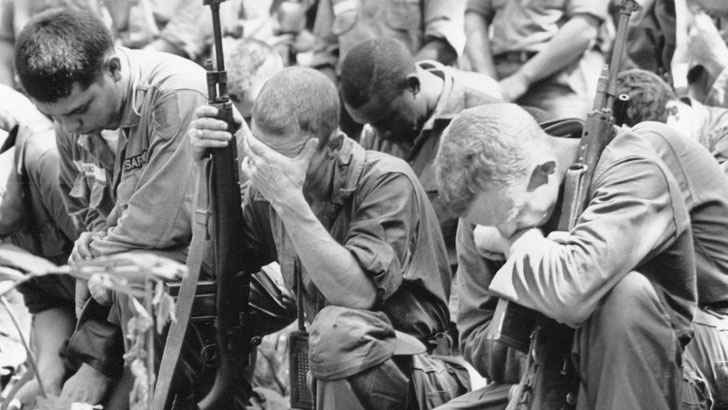
One of the inevitabilities of war is death; two heavily armed sides firing at each other is a recipe for carnage. In the midst of the Vietnam War it was common for soldiers to lose friends and colleagues on a regular basis. Despite it becoming almost routine, these soldiers show that the pain caused by the suffering is not easy to get used to.
Time To Rebuild
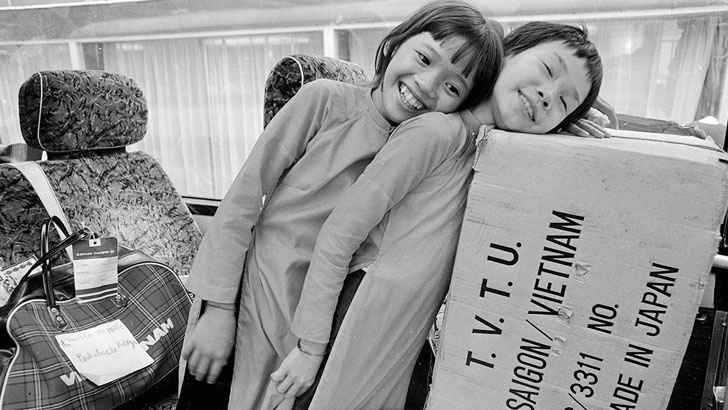
Eventually the war would come to an end. After almost 20 years of devastation and destruction it was time for Vietnam to rebuild itself. It was going to be up to many of the orphaned youths, like these girls, to help rebuild their country. The infrastructure was completely decimated, entire villages had been burned to ash, and cities were entirely abandoned.
Construction Work
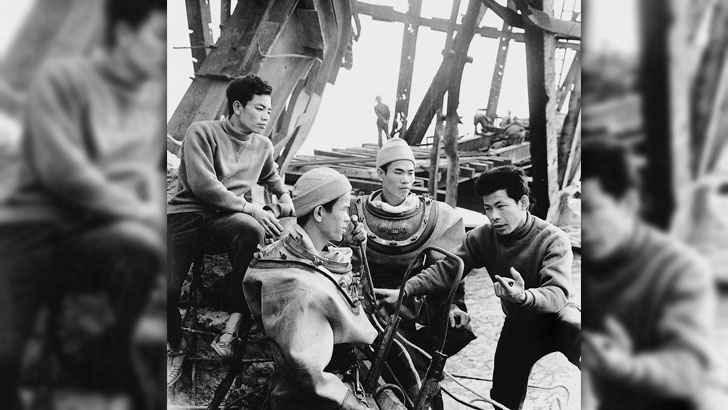
Construction following the war was going to be crucial to give Vietnam the opportunity to rebuild. While the war was still going on, there were some efforts to restore certain areas. These construction workers are coming up with a plan on how to repair a bomb-damaged bridge while wearing diving gear to get to the foundations of the structure.
Reunited

When the war was over, communities were able to try and rebuild the connections they once had before. These elderly women had lived through the entire 20 years of war, embracing as they had been able to see their country reunited once more. The war began in the ‘50s, continued through the entire ‘60s, and finally came to a conclusion in 1975.
War Is Over

Although the war was finally over, there were still fears from South Vietnamese soldiers for their lives. On the outskirts of Saigon, the soldiers abandoned their boots in the road to conceal their identities as the enemy of the North Vietnamese Army. They basically threw their military gear to the ground and dispersed in the hopes they could escape any punishment from the army.
Children Of War
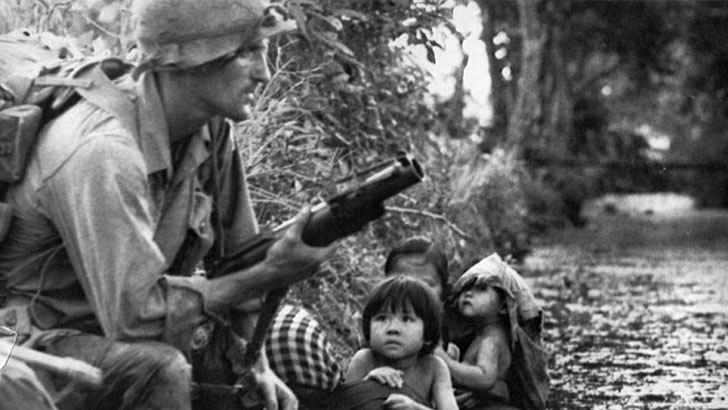
In war, people of all ages suffer, but perhaps none more so than the children. It was believed during the course of the Vietnam War that around 80,000 children were either injured or worse. There were a lot of toxic fumes floating in the air as a result of the constant bombardment which greatly lowered the children’s survival chances.
Physicals
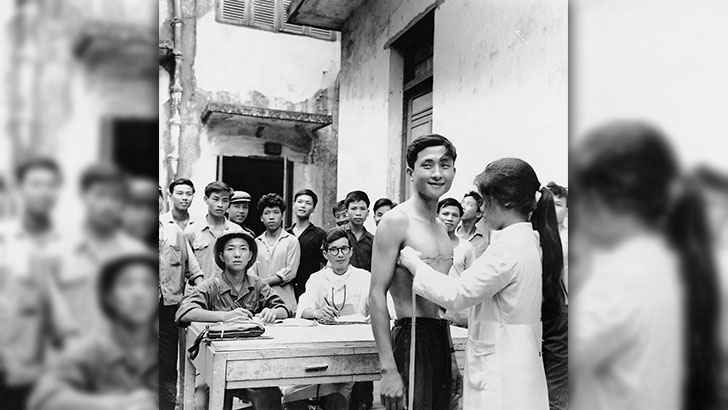
Ten years into the Vietnam war and there was no sign of it ending. The north was originally recruiting volunteers for their cause, but as the fighting continued they moved to a mandatory system. That meant that all men were called up and subjected to physical examinations to determine whether they were fit to fight or not.
Question Time
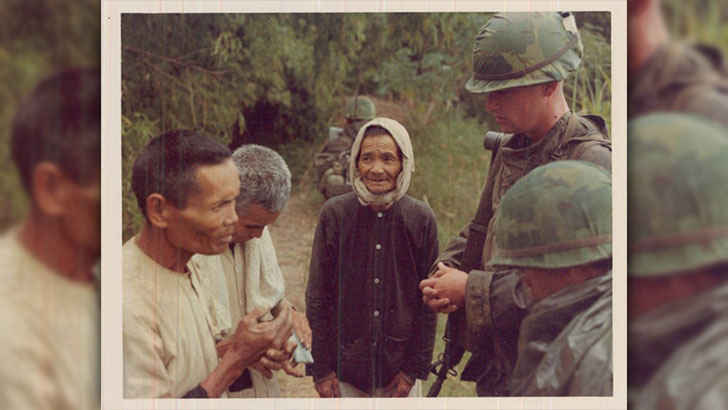
When entering the jungle, the soldiers didn’t know what exactly would be facing them. Sometimes troops were sent on search and destroy missions, meaning they would hunt for small villages and communities. Then they would destroy the buildings, often by setting them alight, forcing the people living there to move on, or surrender.
The People On The Mountain
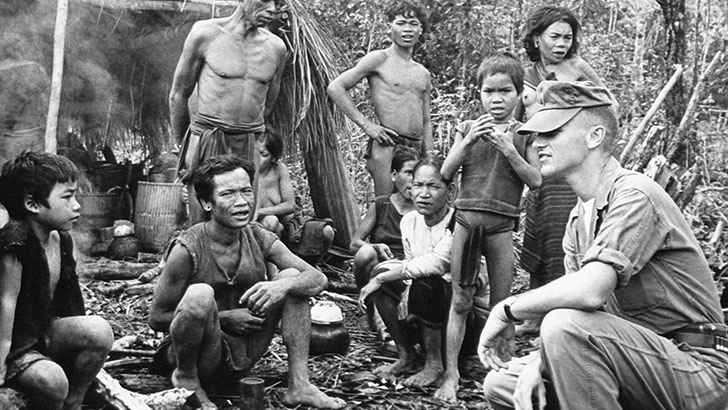
It soon became clear that to win this war, South Vietnam and America would need to recruit soldiers with local knowledge. This picture shows an American soldier communicating with the Montagnard, a small community who lived on a mountain. Recruiting from minority groups meant that soldiers could have expert local knowledge at their fingertips, strengthening prospects for anti-communist fighters.
Families Suffered
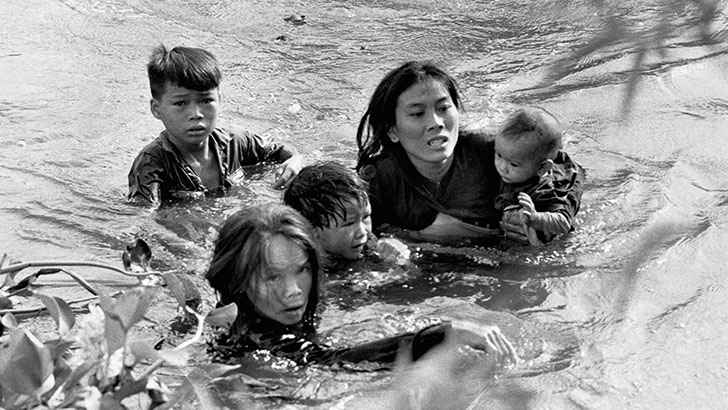
Due to the attacks on their properties, many families were forced to flee their homes any way that they could. This image shows a mother and her children fleeing across a military hot zone to hopeful safety. They had to cross a deep river, filled with potential dangers, to evade bombings going off near their home.
Brothers In Arms

The fallout of war is not pretty, often it results in bloody and injured soldiers. This Marine lying on the ground has been through a lot and barely looks to be holding on to life. Concerned for his soldier, this injured Marine sergeant shows a complete disregard for his own safety to try and help his troop.
Fighting For Peace

The Vietnam War began in the ‘50s but continued into the ‘60s. By that time, the hippie movement had well and truly taken effect in America, and many citizens opposed the war. Unfortunately, the United States military made a compulsory draft, meaning that all eligible to fight in the conflict could be called up at any moment.
President Dwight D. Eisenhower (1953-1961)

President Eisenhower preparing to address the nation in his iconic “Farewell Address.” January 17th, 1961
Vice President Johnson Meets With Vietnamese President (1961)
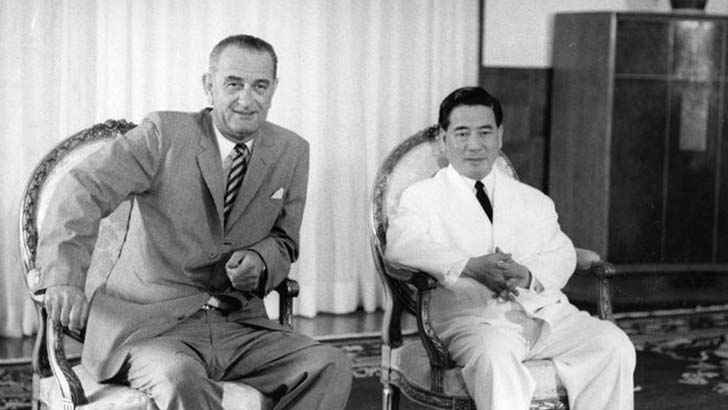
Vice President Lyndon B. Johnson meets with Vietnamese President Ngo Dinh Diem at Independence Palace, Saigon, as part of his Goodwill Tour of Southeast Asia. May 1961
Napalm Strikes, Perfume River (1963)

Napalm air strikes raise clouds into gray monsoon skies above the Perfume River toward Hue in Vietnam. February 28th, 1963
Wounded Viet Marine (1963)

President Kennedy Meets With Military Leaders (1963)

President John F. Kennedy (1961-1963) meets with U.S. Secretary of Defense (center) and U.S. Army Chief of Staff General Maxwell Taylor (left) prior to their visit to South Vietnam to review U.S. Military efforts. September 24th, 1963
Binh Gia (1964)

As part of its winter-spring offensive, the Viet Cong sent its newly created 9th Division to attack South Vietnamese forces at Binh Gia. The attack lasted for 4 days and would eventually be broken by U.S. bombers. 1964
A-1 Skyraider (1964)

A low flying A-1 Skyraider drops 500 lb bombs on a Viet Cong stronghold. December 26th, 1964
Burning Draft Card (1964)

Community Relations (1964)

A.G.I. talking to Vietnamese natives on the road while escorting a supply convoy. 1964
President Johnson Signing HJ RES 1145 (1964)

President Johnson (1963-1969) signed House Joint Resolution 1145, otherwise known as the Tonkin Gulf Resolution expanding the president’s authority to increase U.S. involvement in the war between North and South Vietnam. Johnson, and later Nixon, would go on to use the resolution as the legal rectification for their military policies in Vietnam. August 7th, 1964
Photo Of Viet Cong Leader, Ho Chi Minh (1964)

United States troops holding a photo of Ho Chi Minh, who organized the Viet Cong in the late 1950’s
MLK, Beyond Vietnam (1964)

“Beyond Vietnam: A Time to Break Silence” is an anti-Vietnam war and pro-social justice speech delivered by Martin Luther King Jr. The major speech at Riverside Church in New York, New York, followed several interviews and several other public speeches in which King came out against the war in Vietnam and the policies that created the war. April 4th, 1967
173rd Airborne Brigade (1965)

Huey helicopters carrying troops of the U.S. 173rd Airborne Brigade get help landing on a road near the Montagnard village of Plei Ho Drong. August, 1965.
Giant Centipede (1965)

The Viet Cong weren’t the only thing U.S. troops had to worry about in the jungle. Here is a marine holding a giant centipede. 1965
U.S. Helicopters Provide Cover (1965)

Hovering U.S. helicopters dump machine gun fire into the tree line to cover advancing South Vietnamese ground troops in route to attack a Viet Cong camp eighteen miles north of Tay Ninh. March, 1965
Fallen Soldiers (1965)

Flag-draped coffins of eight American Servicemen killed in attacks on U.S. military installations in South Vietnam, on February 7, are placed in transport plane at Saigon. February 9th, 1965
More From Auto Overload
-


Dubai’s Most Extravagant Attractions
-


Vintage Photographs Of Old Las Vegas
-
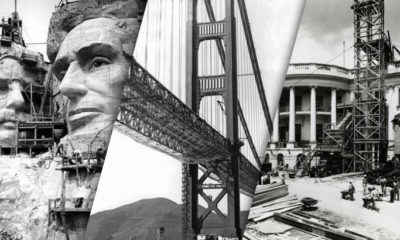

Famous Historical Landmark Construction Photos
-
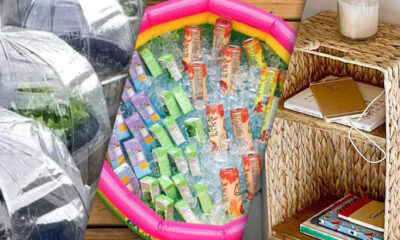

Dollar Store Product Hacks
-


Celebrities Voting Biden
-
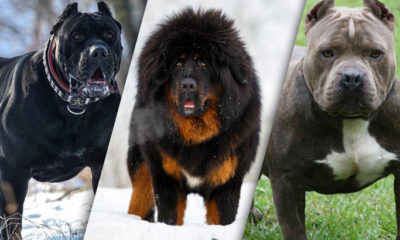

Dog Breeds Not Meant For Your Home
-
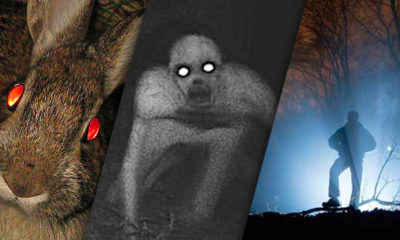

Freaky Urban Legends From Each State
-
Can You Name These Famous Bands?
-


Amazing Nail Hacks For Perfect Manicures
-


Ranked: Top 50 Female Musicians Ever
-


Richest Black People In The World
-


How To Spot An American Tourist Abroad

